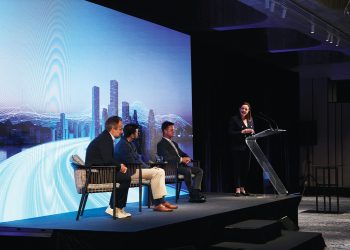The Asian Real Estate Association of America (AREAA) recently released its 2019-2020 State of Asia America Report, which provides a snapshot of the state of Asian American and Pacific Islander (AAPI) homeownership pre-COVID-19.
According to the report:
– There is a huge variation in the homeownership rate within the top 20 metropolitan statistical areas (MSAs) by AAPI population. While the AAPI homeownership rate at Riverside metro area is more than 70 percent, homeownership in the New York metropolitan area is only 50 percent.
– There is a huge variation in the homeownership rate by AAPI subpopulation as well. The Japanese homeownership rate is around 65 percent, while Nepalese homeownership rate is less than 30 percent.
– Many AAPI are buying houses and moving to large MSAs in California, Texas and the Northeast.
– Both AAPI homeownership rate and loan count (conventional purchase only) have been rising post-financial crisis.
– AAPI loans are more likely to have three or more borrowers compared to Non-Hispanic whites, possibly due to multigenerational households.
– In aggregate, AAPI borrowers tend to be younger, have higher credit scores and income than overall population.
– In 2018, there were roughly 0.8 million “Mortgage Weak” AAPI applicants that were considered “credit thin” files with clean credit records. They didn’t have a bad credit but insufficient credit histories to generate a credit score. This is a huge opportunity for lending and credit education.
– Some of the least affordable areas for AAPIs are:
– San Jose-Sunnyvale-Santa Clara, Calif.
– Kahului-Wailuku-Lahaina, Hawaii
– San Francisco-Oakland-Berkeley, Calif.
– Urban Honolulu, Hawaii
– Flagstaff, Ariz.
– Los Angeles-Long Beach-Anaheim, Calif.
– San Diego-Chula Vista-Carlsbad, Calif.
– Seattle-Tacoma-Bellevue, Wash.
– Boston-Cambridge-Newton, Mass.-N.H.
– New York-Newark-Jersey City, N.Y.-N.J.-Pa.
– Washington-Arlington-Alexandria, D.C.-Va.-Md.-W.V.
“The unique barriers to homeownership for our community loom large—from language barriers, to antiquated credit scoring models and underwriting standards that do not account for the self-employed, entrepreneurial AAPI buyer as well as dire shortages in major housing markets—as we try to move the needle on the AAPI homeownership rate,” remarked 2020 AREAA National President James Huang. “We are incredibly proud of this year’s State of Asia America Report and we hope it will serve as a great educational tool in helping find solutions to open up access to housing for the next generation of homebuyers.”
“At RE/MAX, we heartily support the AREAA and are pleased to present its 2020 State of Asia America Report, far and away the most comprehensive compilation of AAPI real estate and economic data available today,” said RE/MAX Senior Vice President, Industry Relations and Global Growth & Development, Mike Reagan. “The data found in the report is invaluable in highlighting the growing power and influence of the fastest-growing population in the United States.”
The 2019-2020 State of Asia America report is sponsored by RE/MAX. To read the entire report, visit areaa.org/2020saa.










